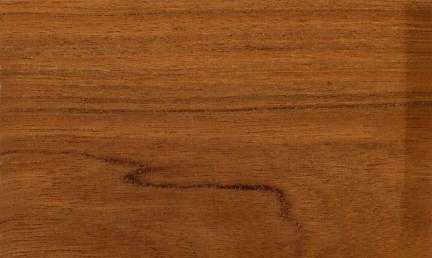
Thingan (Hopea foxworthyi)
Family: Dipterocarpaceae
Common names: Balau, Dalingdingan, Emang besi, Gagil, Giam, Gisok gisok, Hopea (light and heavy), Kaliot, Koki, Lao two, Luis, Magasusu, Mai tajien, Mai takien, Manggachapui, Merawan, Narek, Sangal, Thingan, Tjengal
Distributed in: Indonesia, Malaysia, Papua New Guinea, Philippines, Thailand (Oceania and S.E. Asia)
Distribution overview: This is one of about ten species in the Hopea genus which grows in the Philippines. Its growth range is the Romblon and Sibuyan Islands, and the Zamboanga Province.
Common uses: Beams, Bent Parts, Boat building, Building construction, Cabin construction, Cabinetmaking, Canoes, Chairs, Chests, Concrete formwork, Construction, Crossties, Decks, Desks, Dining-room furniture, Domestic flooring, Drawer sides, Excelsior, Factory construction, Factory flooring, Fine furniture, Flooring, Form work, Foundation posts, Framing, Furniture , Furniture components, Furniture squares or stock, Hatracks, Heavy construction, Joinery, Joists, Kitchen cabinets, Lifeboats, Light construction, Living-room suites, Office furniture, Parquet flooring, Porch columns, Radio - stereo - TV cabinets, Railroad ties, Turnery
Product sources: Timbers produced by species in the Hopea genus are reported to fall into one of two groups, and is referred to by the name of the best known species in that group. The two classes are the Yacals and the Mangachapuys. Timbers in the Yacal class are harder, heavier, stronger, darker (when fresh), more resistant to decay, and more cross-grained. Commercially, the Yacals are reported to include several species of Shorea and of Vatica which produce timbers that are almost identical. The Yacals are the most abundant of the very hard, strong, and durable high-class construction timbers of the Philippine Islands. Timber produced by H. foxworthyi falls in the Mangachapuy group.
Environment profile: Extinct, Endangered, Vulnerable, or Rare within its range
Tree size: Tree height is 20-30 m
Colors: the heart isRed, Yellowand the sapwoodWhite, Yellow.The grain isStraight, the textureFine to mediumand the lusterLow
Natural durability: Good weathering properties, Resistant to termite attack
Odor: No specific smell or taste
Kiln Schedules: T3 - C2 (4/4) US
Drying Defects: Slight surface checking, Slight twist/warp
Ease of Drying: Dries slowly with no degrade under controled conditions
Blunting Effect: Slight
Carving: Good results
Cutting Resistance: Difficult to saw
Gluing: Difficult to glue
Planing: Planes well, to a good finish
Resistance to Impregnation: Sapwood is permeable
Response to hand tools: Yields a smooth, clean finish
Sanding: Good sanding finish
Polishing: Good;
- Numerical data Metric
- Numerical data English
- Strength properties
- References
 |
 |
 |
 |
| Item |
Green |
Dry |
Metric |
| Specific Gravity |
0,6 |
|
|
| Density |
|
753 |
kg/m3 |
| Bending Strength |
818 |
1269 |
kg/cm2 |
| Crushing Strength |
73 |
106 |
kg/cm2 |
| Hardness |
|
648 |
kg |
| Impact Strength |
|
|
cm |
| Shearing Strength |
|
116 |
kg/cm2 |
| Stiffness |
140 |
170 |
1000 kg/cm2 |
| Tangential Shrinkage |
6 |
|
% |
| Radial Shrinkage |
3 |
|
% |
| Weight |
737 |
608 |
kg/m3 |
| Maximum Load |
|
|
cm-kg/cm3 |
| Toughness |
|
480 |
cm-kg |
| Static Bending |
514 |
776 |
kg/cm2 |
|
 |  |  |  | | Item | Green | Dry | English | | Bending Strength | 11646 | 18051 | psi | | Crushing Strength | 1051 | 1512 | psi | | Density | | 47 | lbs/ft3 | | Hardness | | 1430 | lbs | | Maximum Crushing Strength | 5421 | 9040 | psi | | Shearing Strength | | 1658 | psi | | Static Bending | 7318 | 11047 | psi | | Stiffness | 2000 | 2419 | 1000 psi | | Toughness | | 417 | inch-lbs | | Specific Gravity | 0.6 | | | | Weight | 46 | 38. | lbs/ft3 | | Radial Shrinkage | 3 | | % | | Tangential Shrinkage | 6 | | % | | Volumetric Shrinkage | 9 | | % | |
Chudnoff, M.,1984,Tropical Timbers of the World,U.S.A. Department of Agriculture, Forest Service, Forest Products,Laboratory, Madison.Eddowes, P. J. 1961. Commercial Timbers of Papua New Guinea:Their Properties and Uses. Office of Forests, Papua New GuineaLauricio, F. M., Bellosillo, S. B., The Mechanical and Related Properties of Philippine Woods, The Philippine Lumber Journal, 12(5):A-HSchneider, E.E. 1916. Commercial Woods of the Philippines: Their Preparation and Uses. Bulletin No. 14. Department of the Interior, Bureau of Forestry, Manila, Philippines.WCMC.1992.Conservation Status Listing - Trees and Timbers of the World.World Conservation Monitoring Center - Plants Programme, Cambridge, CB3 ODL, United Kingdom.
|








